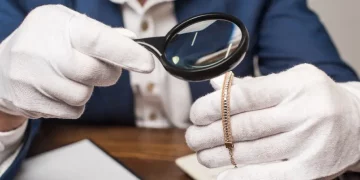In the past few years, NFTs (Non-Fungible Tokens) took the world by storm, presenting a futuristic vision of collectibles and digital ownership. Virtual art, digital assets, and blockchain-backed items became the golden ticket for investors, collectors, and creators. However, the rapid rise of NFTs was followed by an equally swift decline. As the hype faded and market corrections set in, questions arose: What’s next for the collectibles world?
With the NFT bubble bursting, the focus is returning to what many had left behind: rare physical collectibles. But is this resurgence a simple trend, or are we witnessing a long-term shift back to tangible, physical assets?
The NFT Craze: The Boom and the Bust
NFTs first gained mainstream attention in 2020 and 2021, attracting high-profile artists, celebrities, and investors. In an era defined by digitalization, NFTs seemed to be the next logical step in the evolution of collecting. They offered the promise of true ownership in a digital age, with unique digital art pieces, virtual real estate, and even moments from sports history being tokenized and sold for millions of dollars.
However, despite their initial success, the NFT market began showing signs of instability. By 2023, many NFT projects that once promised huge returns were seeing significant value drops. Market saturation, lack of real utility, and regulatory concerns led to the disillusionment of many early adopters. The “get-rich-quick” mentality that had defined much of the NFT frenzy started to lose its grip on investors and collectors alike.
The Comeback of Tangible, Rare Collectibles
As the digital frenzy cooled, a familiar face reappeared in the spotlight: physical collectibles. From vintage cars to rare sports memorabilia, antique art to limited-edition items, physical treasures are making a roaring comeback in 2025. But why now, after such a rapid shift toward digital ownership?
1. A Tangible Connection to History
One of the key reasons behind the return of physical collectibles is the growing desire for tangible ownership. In a world where everything seems virtual—banking, entertainment, socializing—many are seeking to reconnect with something they can hold, touch, and display. Physical collectibles, whether it’s a piece of art from a master painter or a vintage car once owned by a sports legend, provide a deeper, more personal connection to history. The emotional appeal of owning a piece of the past, especially one with verifiable rarity and authenticity, cannot be matched by any digital asset.
2. Proven Value and Stability
While NFTs were seen as an exciting, high-reward investment opportunity, they also posed significant risks due to their volatile nature. The value of a digital collectible could fluctuate wildly based on trends, celebrity endorsements, or market speculation. In contrast, physical collectibles have a long-standing history of maintaining value over time, even if they fluctuate. Rare physical assets, such as original works of art, limited-edition sneakers, and historical memorabilia, have been appreciating assets for decades. They are seen as more stable in the long term, making them an attractive option for investors looking for a safer, more traditional form of wealth preservation.
3. The Resurgence of Auctions and Record-Breaking Sales
The auction houses have been a major player in the return of physical collectibles. Major auctions like Sotheby’s and Christie’s have seen a massive surge in high-value physical items—far surpassing the NFTs once sold for millions. For example, in 2025, a 1955 Mercedes-Benz 300 SLR Uhlenhaut Coupe, considered one of the most valuable cars in history, was sold for $150 million, breaking records. Similarly, a rare 1st Edition Superman comic book fetched a staggering $6 million at auction. These sales not only highlight the enduring value of tangible collectibles but also show that high-net-worth individuals are once again turning to traditional, physical assets.
4. The Rise of New Collecting Niches
The return to physical collectibles isn’t just about old-school art or vintage cars. New, more niche categories are emerging. From limited-edition sneakers and designer fashion items to digital-meets-physical hybrid collectibles, the market for rare physical goods has expanded. Artists are now creating mixed-media pieces that combine physical art with augmented reality (AR) elements or embedded digital components, bridging the gap between the old and new.

Why Are We Returning to Physical Collectibles Now?
The shift away from NFTs towards physical items isn’t just a random trend—it’s the natural result of the broader cultural and economic forces at play. The NFT market’s instability and the market corrections that followed have made many collectors rethink their strategies. Physical items offer a sense of security and authenticity that digital assets often cannot.
Moreover, as global economic uncertainty continues, many investors are looking to diversify their portfolios, with physical collectibles seen as a safer bet in a time of inflation or market volatility. They are also more tangible to those who want something “real” as opposed to something purely digital or speculative.
Is the Return of Physical Collectibles Here to Stay?
The resurgence of physical collectibles is not a temporary phase. The demand for rare, authentic, and historically significant items is likely to continue growing, especially as the younger generation of collectors, many of whom were previously attracted to NFTs, begin to appreciate the lasting value of physical goods. These items not only have intrinsic worth, but they also carry personal and cultural significance, which makes them more appealing as long-term investments.
Conclusion
NFTs may have dominated the conversation in recent years, but the collectibles market is clearly turning back to what it knows best: rare, physical treasures. The return of physical collectibles after the NFT bubble burst is not just a trend—it’s a sign of a fundamental shift in the way people approach collecting and investing. As collectors look for stability, authenticity, and long-term value, rare physical collectibles are stepping back into the spotlight, offering a unique and tangible connection to history, culture, and personal legacy.
For anyone who missed the rush of the digital age, now might be the time to pay attention to the treasures of the physical world—because these timeless items are making a grand comeback, and you won’t want to miss it.

















































